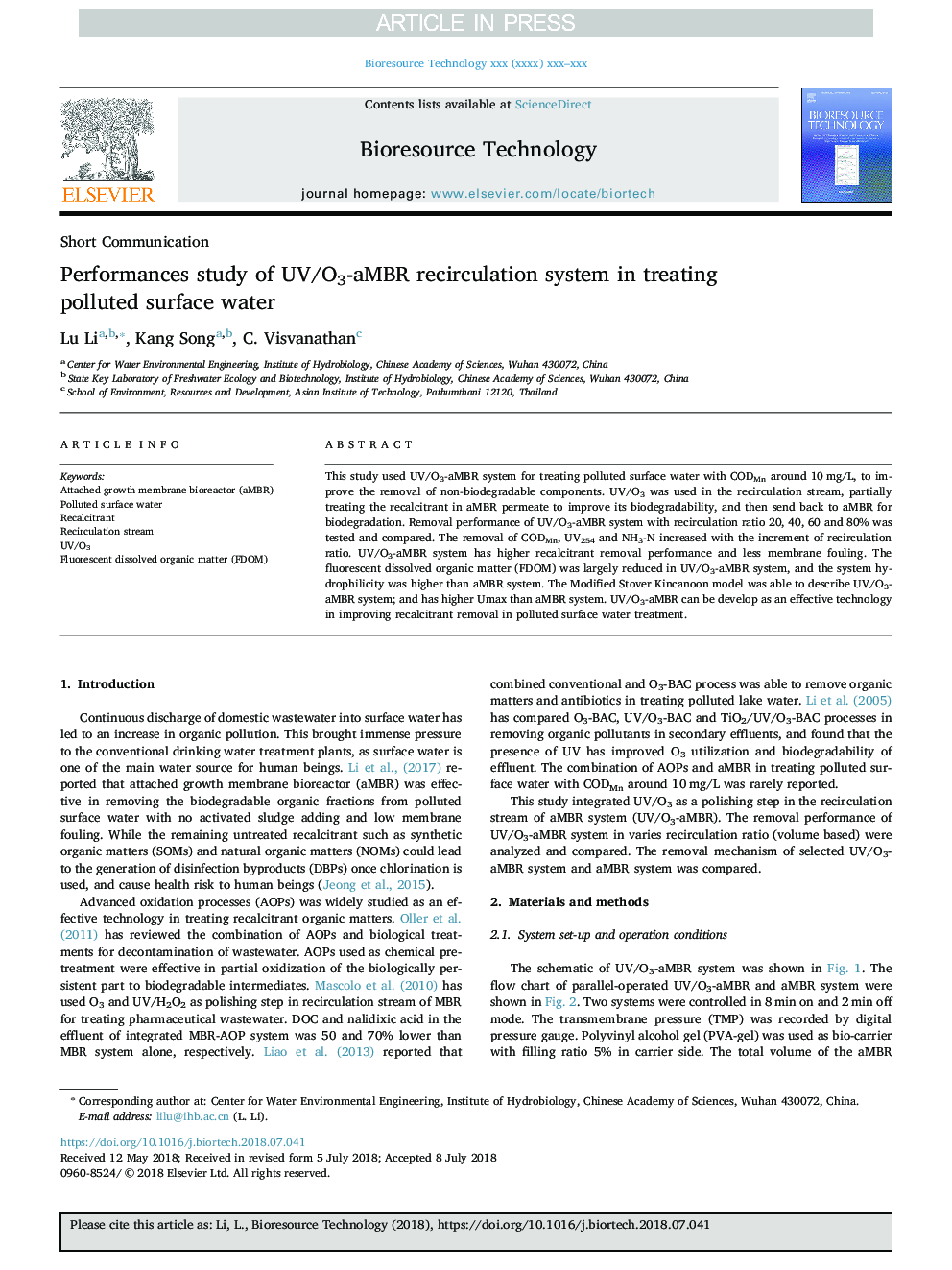| Article ID | Journal | Published Year | Pages | File Type |
|---|---|---|---|---|
| 7065955 | Bioresource Technology | 2018 | 5 Pages |
Abstract
This study used UV/O3-aMBR system for treating polluted surface water with CODMn around 10â¯mg/L, to improve the removal of non-biodegradable components. UV/O3 was used in the recirculation stream, partially treating the recalcitrant in aMBR permeate to improve its biodegradability, and then send back to aMBR for biodegradation. Removal performance of UV/O3-aMBR system with recirculation ratio 20, 40, 60 and 80% was tested and compared. The removal of CODMn, UV254 and NH3-N increased with the increment of recirculation ratio. UV/O3-aMBR system has higher recalcitrant removal performance and less membrane fouling. The fluorescent dissolved organic matter (FDOM) was largely reduced in UV/O3-aMBR system, and the system hydrophilicity was higher than aMBR system. The Modified Stover Kincanoon model was able to describe UV/O3-aMBR system; and has higher Umax than aMBR system. UV/O3-aMBR can be develop as an effective technology in improving recalcitrant removal in polluted surface water treatment.
Related Topics
Physical Sciences and Engineering
Chemical Engineering
Process Chemistry and Technology
Authors
Lu Li, Kang Song, C. Visvanathan,
